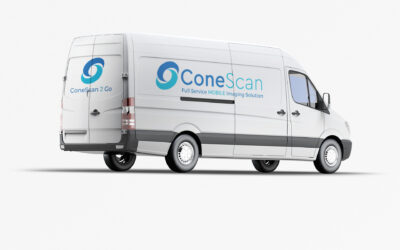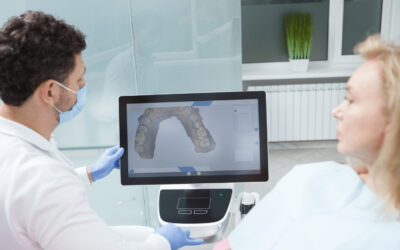
Imaging technology has come a long way in the medical and dental fields. As new imaging technologies emerge, it can be confusing to differentiate between them. In this post, we’ll discuss the differences between traditional CT and cone beam computed tomography (CBCT) to help you make better decisions when selecting a dental imaging system for your practice.
CBCT vs CT
CBCT (Cone Beam Computed Tomography) scanning is a more advanced and accurate imaging technique than traditional dental CT scans. Unlike dental CT scans which use a single fan beam that passes through the body, CBCT scanners use cone beams that are rotated around the patient to create a three-dimensional image. This allows for more detailed imaging and better visualization of the teeth, jaws, and surrounding structures. Additionally, CBCT scans require less radiation exposure than traditional CTs, making them safer for long-term use.
What is the difference between CT and CBCT?
While both types of scans use radiation to capture radiographs, there are several notable differences between the two techniques. Conventional CT scanners rely on a fan-shaped or spiral form of scanning which utilizes an anode x-ray tube while CBCT scans make use of a cone-shaped beam and fluoroscopy tube in order to produce higher resolution images with less radiation exposure.
Furthermore, unlike traditional CT scanners which capture image data on 2D detectors, CBCT technology creates 3D pixels known as voxels in order to create detailed digital reconstructions of the area scanned – making it ideal for dental applications such as the assessment of surrounding bones when placing implants.
CBCT vs CT radiation dose
An analysis of the data from several dosimetry studies found that CBCT machines can offer substantially lower radiation doses compared to traditional multi-slice CT scanners – up to a tenth of what is typically used in CT scans. This shows that CBCT makes for an incredibly safe method that allows for more detailed images even as it lowers radiation exposure.
It’s important to note, however, that CBCT scans do expose patients to more radiation than a panorex or bite wing X-ray. Dentists use cone beam CT because it can produce higher quality images in three dimensions, which helps them detect any problems that can’t be seen on traditional x-rays or explored manually.
Advantages of CBCT
- CBCT scans enable dentists to precisely and accurately measure and localize jawbone for virtual implant placement.
- By combining a CBCT scan with an optical scan, dentists can generate a comprehensive 3D model of the patient’s soft tissues, teeth and bones which helps design the perfect bite and decrease the chance of misaligned implants.
- An advantage of CBCT over conventional dental imaging is they allow mapping of sensory nerves so that surgical teams can select an appropriate implant length that avoids nerve damage.
- Provide a clear picture of the maxillary sinus to ensure proper implant length is chosen to prevent accidental penetration.
- Gives dentists all the relevant information to pick an implant size that offers optimal stability and integration, guaranteeing it meets all requirements and lasts the longest possible time.
In conclusion
As we’ve discovered, CBCT imaging offers valuable insights into patient diagnosis, treatment planning, and postoperative monitoring that traditional scans simply cannot provide. Cone Beam Computed Tomography (CBCT) is quickly becoming the preferred choice for medical imaging due to its superior image quality, reduced radiation emission, and faster scanning time compared to conventional CT scans. If you’re looking for an efficient and reliable way to capture detailed images of your patients during diagnosis or treatment planning, then CBCT may be just what you need! Contact ConeScan today to find out more.


